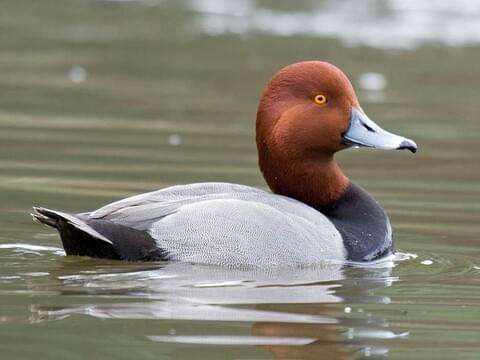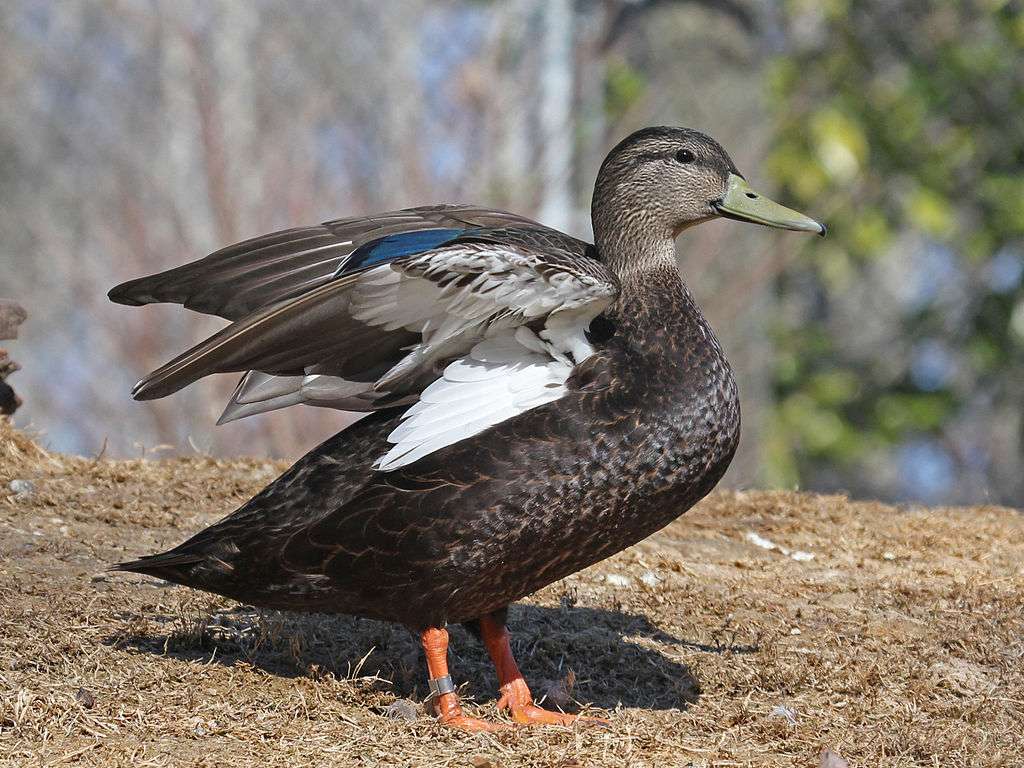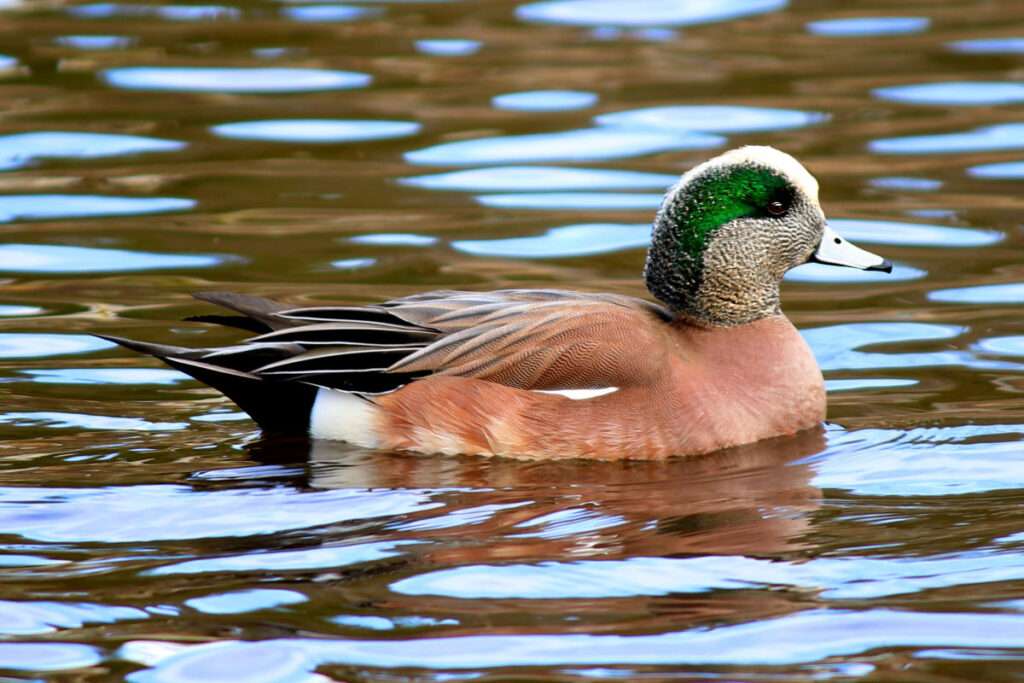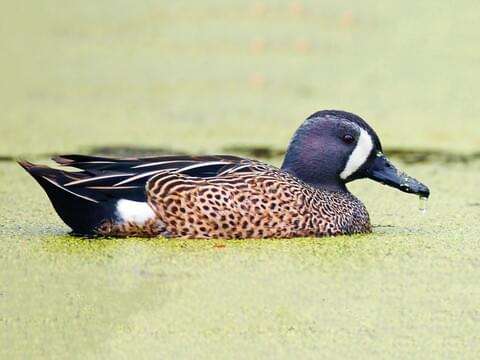
The redhead (Aythya americana), a medium-sized diving duck, can be found. The redhead measures 37 cm (15 in) in length and 84 cm in width (33 in).
Fun Facts
- Male Redheads in the courting stage engage in a gymnastic “head throw” maneuver in which they practically fold in half and extend their necks far over their backs until their heads touch their tails. The bird then snaps its neck forward and utters a loud meow sound that sounds like a cat.
- Redheads are known as “rafting ducks” because of their outstanding gregariousness. At hunting decoys, they occasionally land before the hunters have finished rigging them.
Description
Male redheads have a black lower neck, foreback, and breast with a reddish head and upper neck. Dark grayish-gray dominates the remaining back. The back and tail are a brownish-black color. It can be distinguished from scaup by a wide band of light gray that crosses the dusky gray wing and runs over the primaries. The bill is light blue-gray with a whitish band hidden beneath a big black tip, while the legs and feet are gray. Female redheads have a buff-white chin and throat, a reddish-brown head, neck, and breast, and an indistinct eye ring and stripe behind the eye. With buffer fringes, the warm brown flanks and breast hardly contrast.

Predators
Redheads have few natural predators and are more likely to pass away from sickness or unintended human interference. These ducks aren’t as popular as mallards or other puddle ducks as table fare, but waterfowl hunters who prefer diving ducks often target them because of their attractive plumage. The majority of predation takes the form of egg foraging and predation on ducklings.
Diet
Aquatic insects and plants. Aquatic plants including shoal grass, pondweeds, smartweeds, sedges, waterlilies, and others provide the majority of the leaves, stems, seeds, and roots that are consumed. Eats a lot of mollusks, small fish infrequently, and numerous water insects, especially in the summer.
Habitat
Fresh marshes in the summer; lakes, salty bays, and estuaries. Large marshes in prairies or intermountain valleys are preferred for the nesting season. On big lakes, migrants congregate. Primarily on coastal bays and lagoons throughout the winter, as well as on inland freshwater lakes.
As Pet
In nature, redhead ducks are widely distributed. These migratory birds are also occasionally kept as pets. The bird is common in aviculture, and owners should provide nesting boxes or dense natural cover as well as a suitable water environment for these diving ducks. The redheads can also be fed foods like greens, dried dog food, regular poultry feed, and duck pellets.
Table





